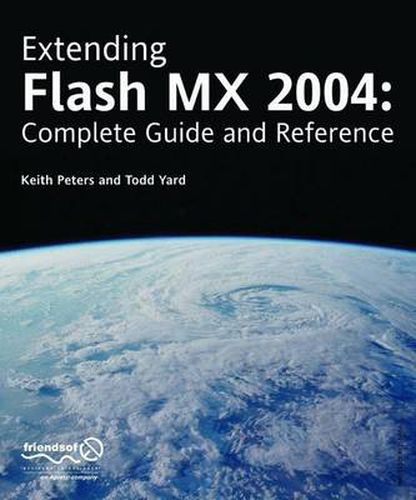Readings Newsletter
Become a Readings Member to make your shopping experience even easier.
Sign in or sign up for free!
You’re not far away from qualifying for FREE standard shipping within Australia
You’ve qualified for FREE standard shipping within Australia
The cart is loading…






This title is printed to order. This book may have been self-published. If so, we cannot guarantee the quality of the content. In the main most books will have gone through the editing process however some may not. We therefore suggest that you be aware of this before ordering this book. If in doubt check either the author or publisher’s details as we are unable to accept any returns unless they are faulty. Please contact us if you have any questions.
Flash MX 2004 and Flash MX Professional 2004 introduce a new extensibility architecture. This is not an upgrade to an existing feature, but a brand new concept that nobody using an earlier version of Flash has seen or used before. With the extensibility tools, which include behaviors, custom-made tools and commands, the JavaScript API (or JSFL), and the XML-to-UI API, you can literally extend Flash to do things it cannot do out of the box. Things such as adding new custom commands to the menu and customizing the tool bar, adding brand new, custom created tools. The commands could be as simple as drawing a commonly used shape on the stage, or as complex as creating an entire new Flash movie from scratch. Tools take into account mouse actions and property inspector parameters. This allows you for custom shapes much as are seen in Microsoft Office, for example, stars, callouts, arrows, etc. These new features will not only allow users to share code and effects more easily within the community or a production environment, but will also allow developers to package up and reuse more within Flash than was ever possible before, increasing productivity and decreasing production times. Some simple commands, tools, effects and behaviors will be included with Flash MX 2004, but the possibilities of what one could do with these are staggering. Virtually anything you can do in the authoring environment can now be written into a command or behavior.
$9.00 standard shipping within Australia
FREE standard shipping within Australia for orders over $100.00
Express & International shipping calculated at checkout
This title is printed to order. This book may have been self-published. If so, we cannot guarantee the quality of the content. In the main most books will have gone through the editing process however some may not. We therefore suggest that you be aware of this before ordering this book. If in doubt check either the author or publisher’s details as we are unable to accept any returns unless they are faulty. Please contact us if you have any questions.
Flash MX 2004 and Flash MX Professional 2004 introduce a new extensibility architecture. This is not an upgrade to an existing feature, but a brand new concept that nobody using an earlier version of Flash has seen or used before. With the extensibility tools, which include behaviors, custom-made tools and commands, the JavaScript API (or JSFL), and the XML-to-UI API, you can literally extend Flash to do things it cannot do out of the box. Things such as adding new custom commands to the menu and customizing the tool bar, adding brand new, custom created tools. The commands could be as simple as drawing a commonly used shape on the stage, or as complex as creating an entire new Flash movie from scratch. Tools take into account mouse actions and property inspector parameters. This allows you for custom shapes much as are seen in Microsoft Office, for example, stars, callouts, arrows, etc. These new features will not only allow users to share code and effects more easily within the community or a production environment, but will also allow developers to package up and reuse more within Flash than was ever possible before, increasing productivity and decreasing production times. Some simple commands, tools, effects and behaviors will be included with Flash MX 2004, but the possibilities of what one could do with these are staggering. Virtually anything you can do in the authoring environment can now be written into a command or behavior.